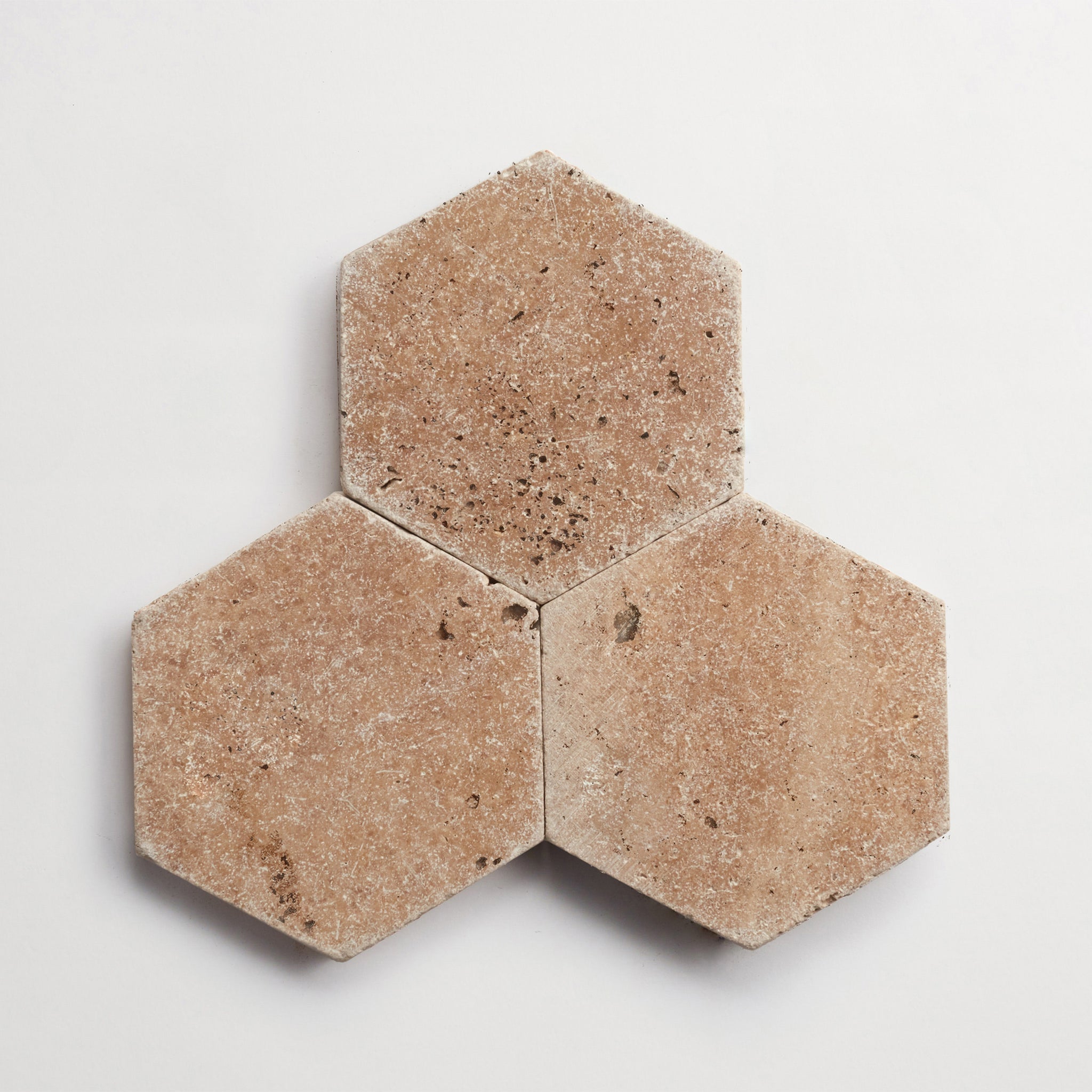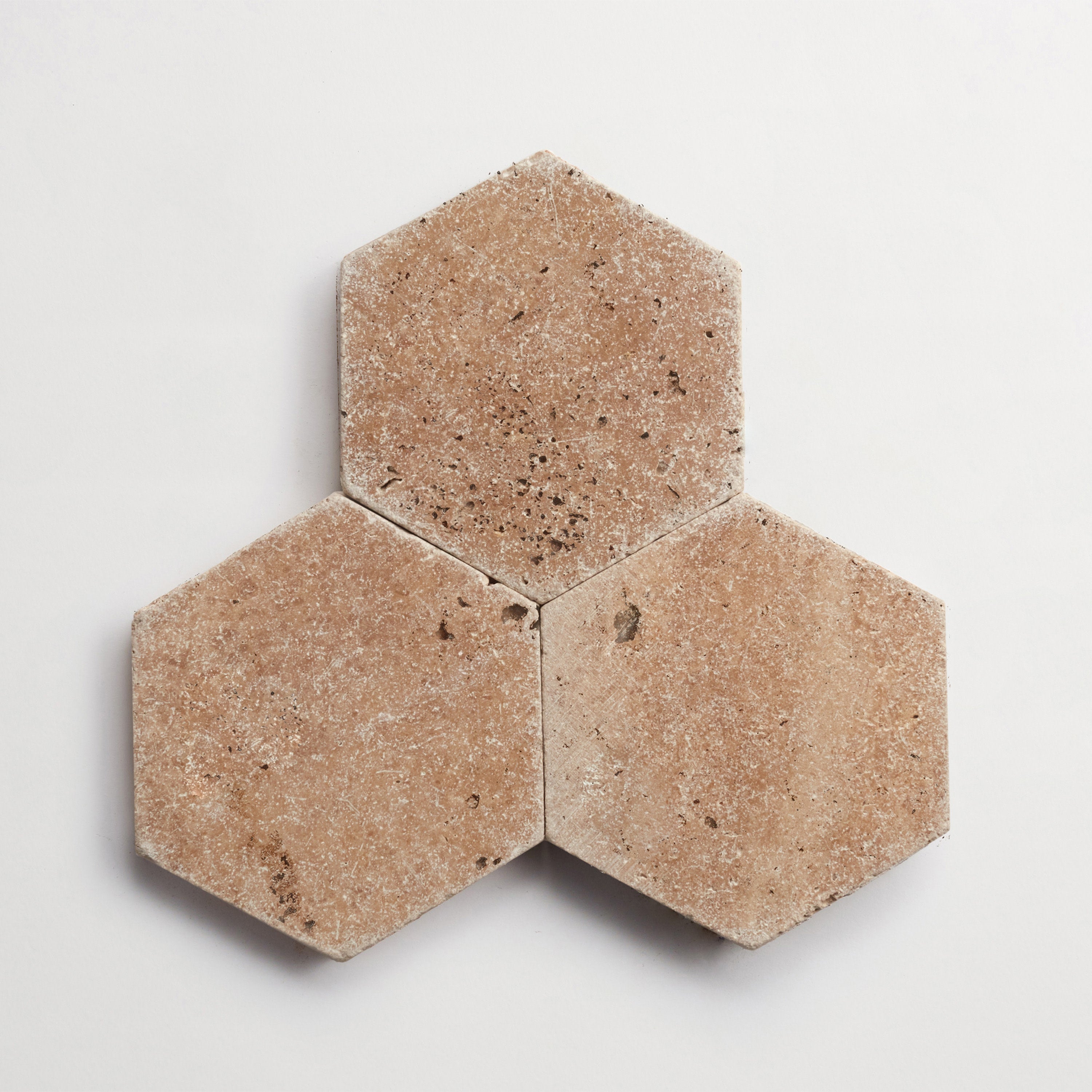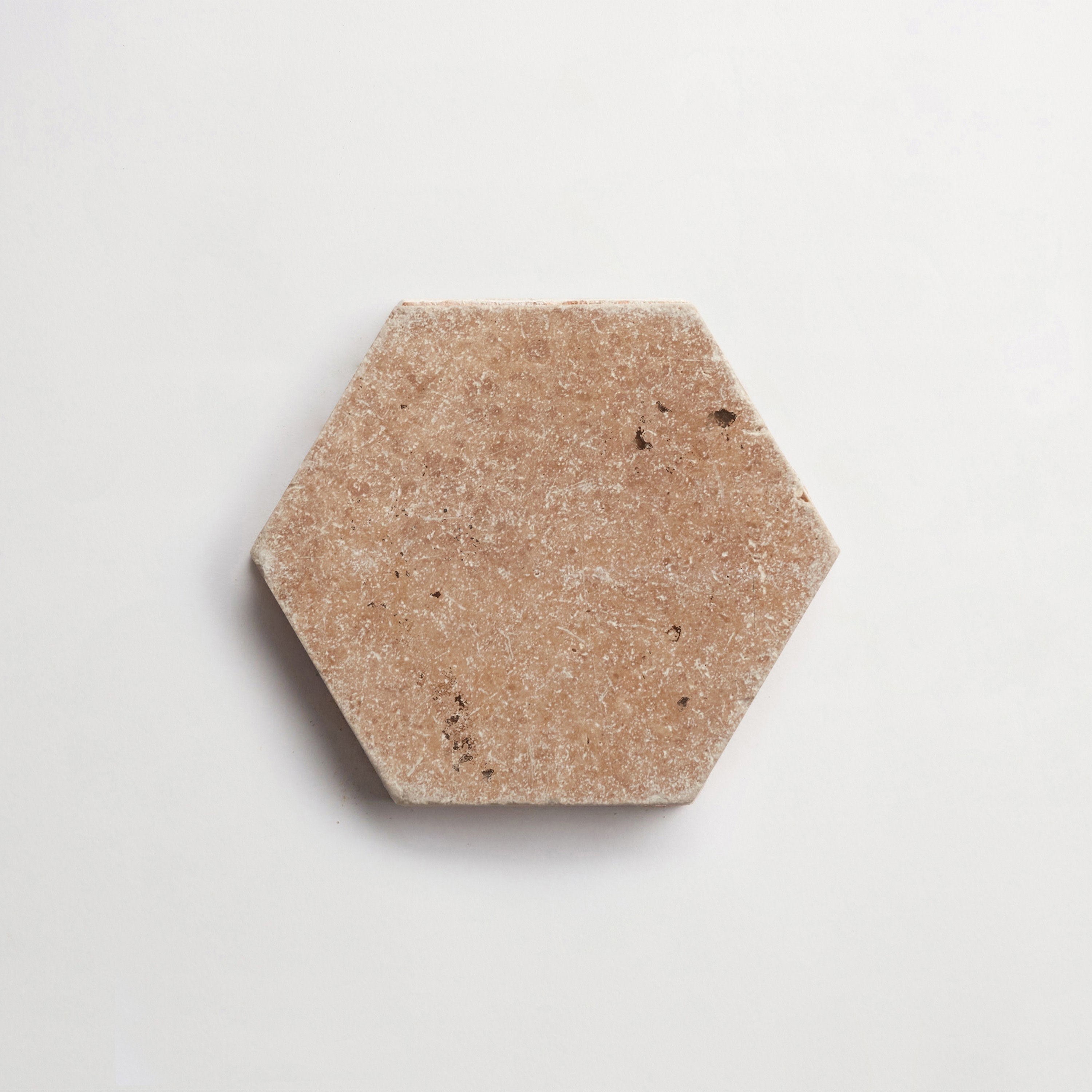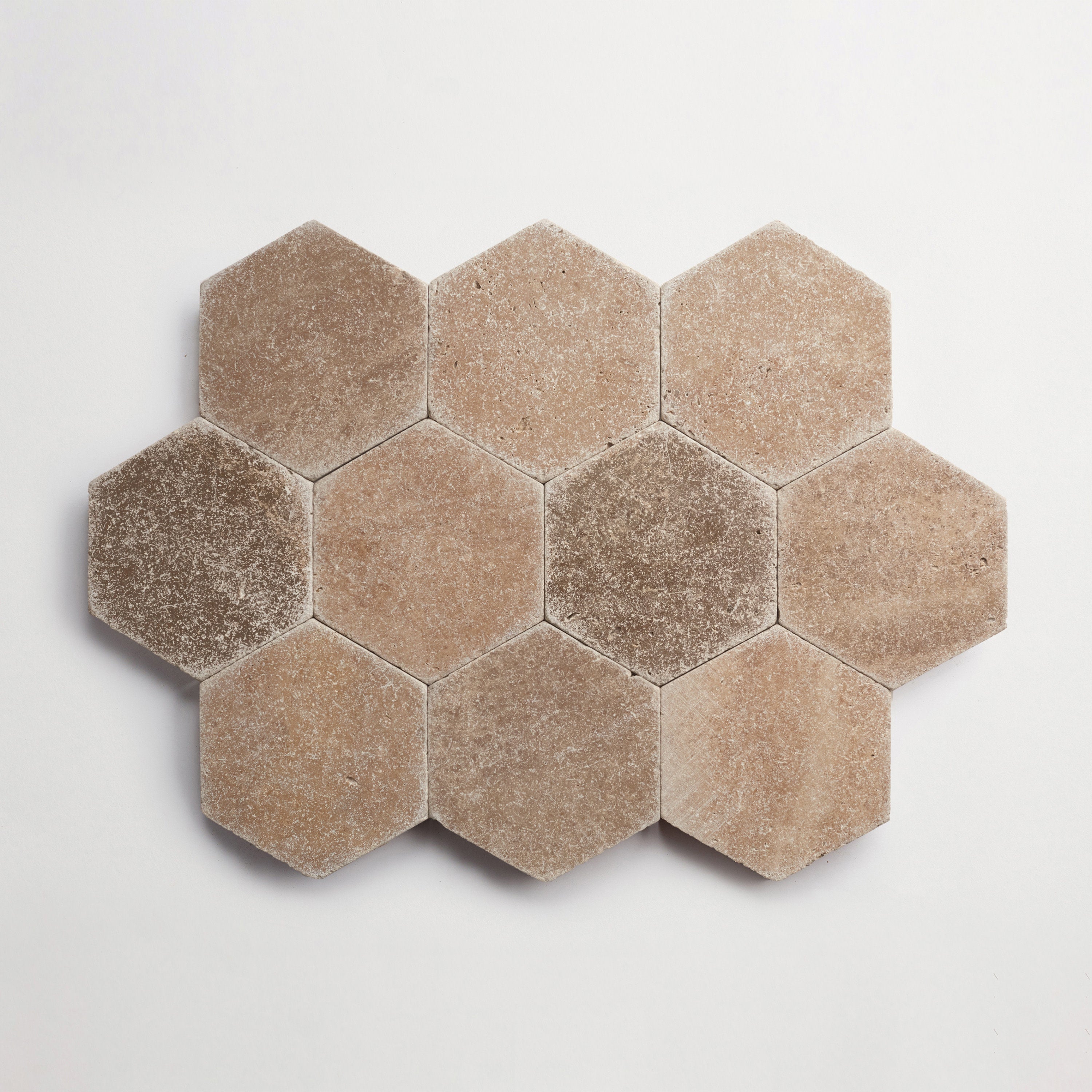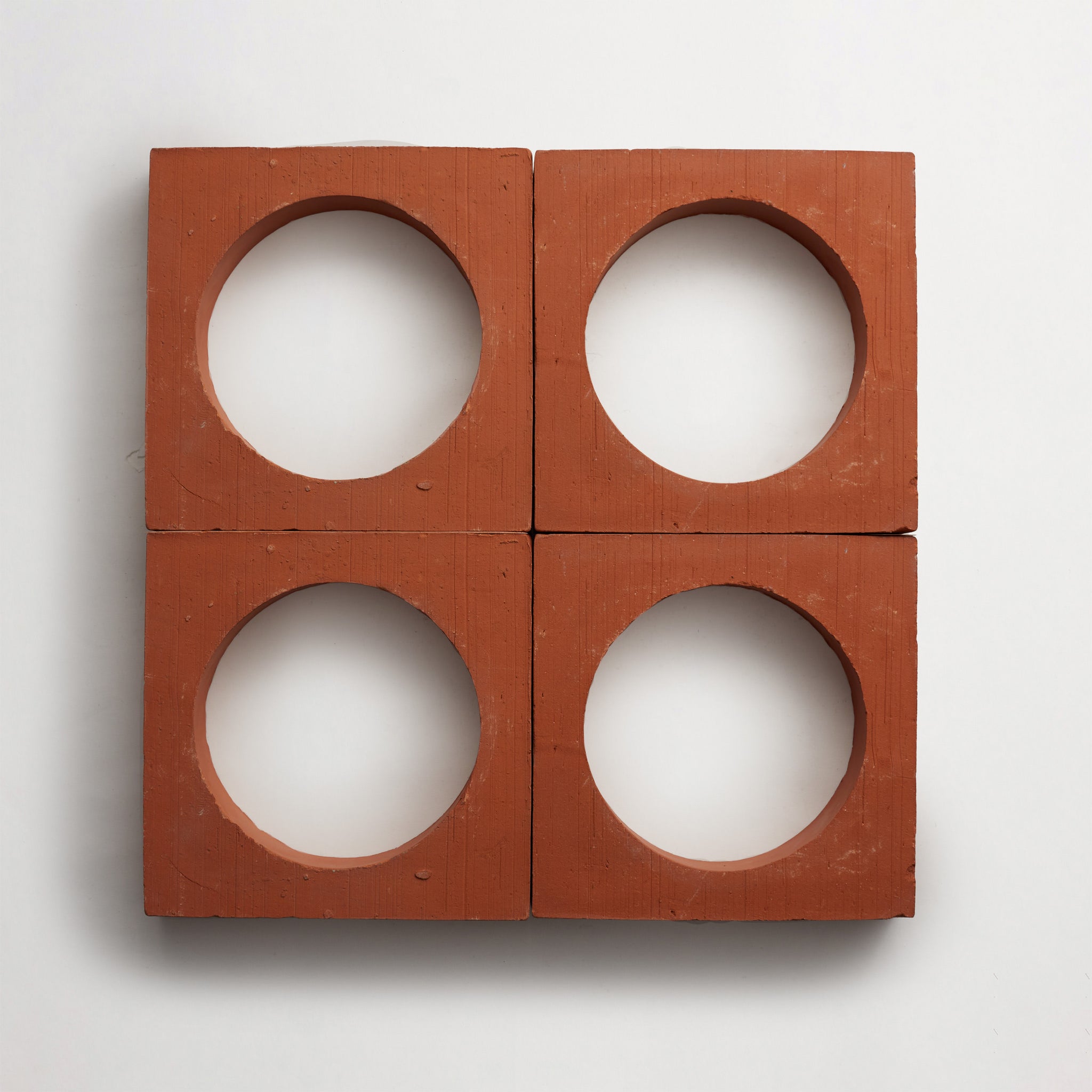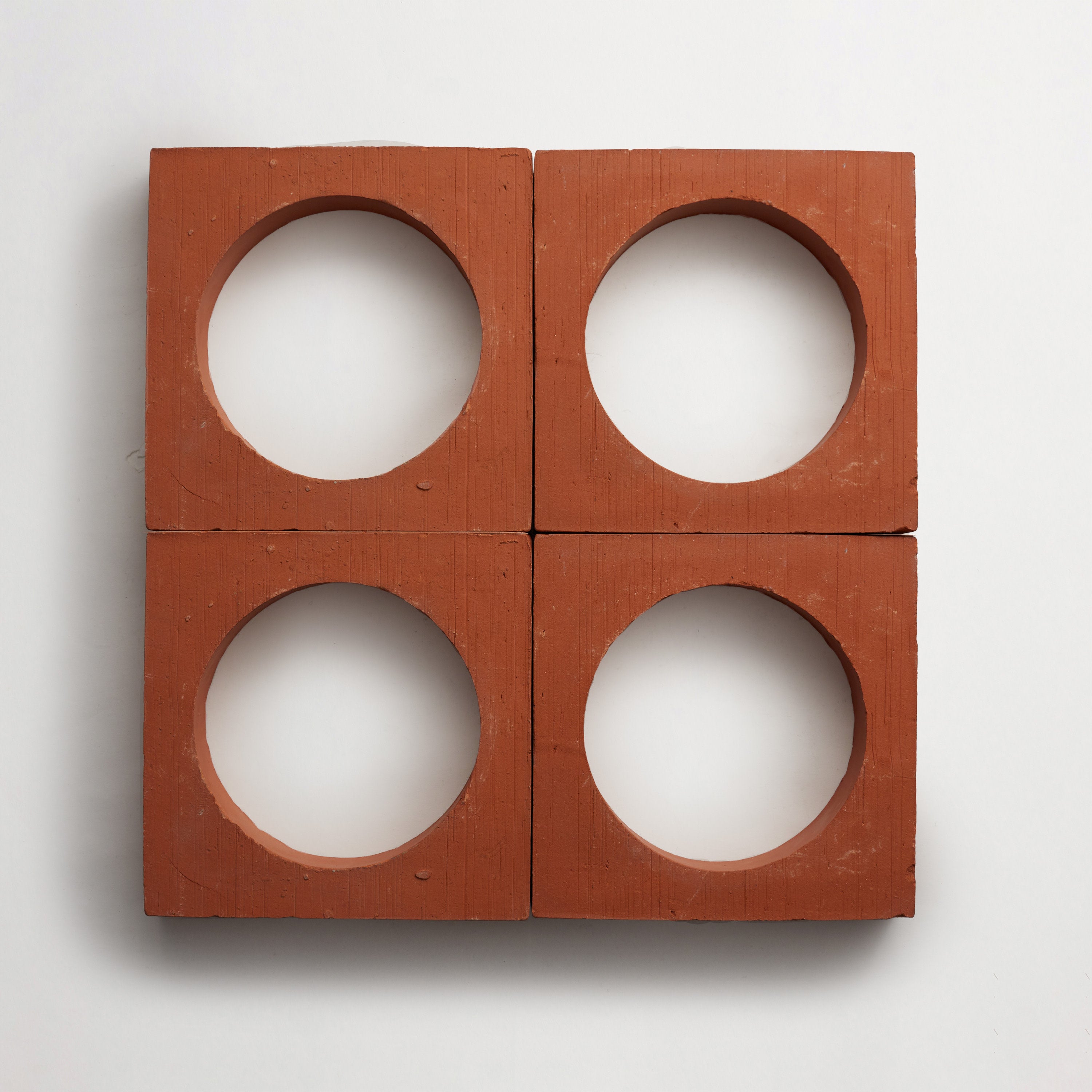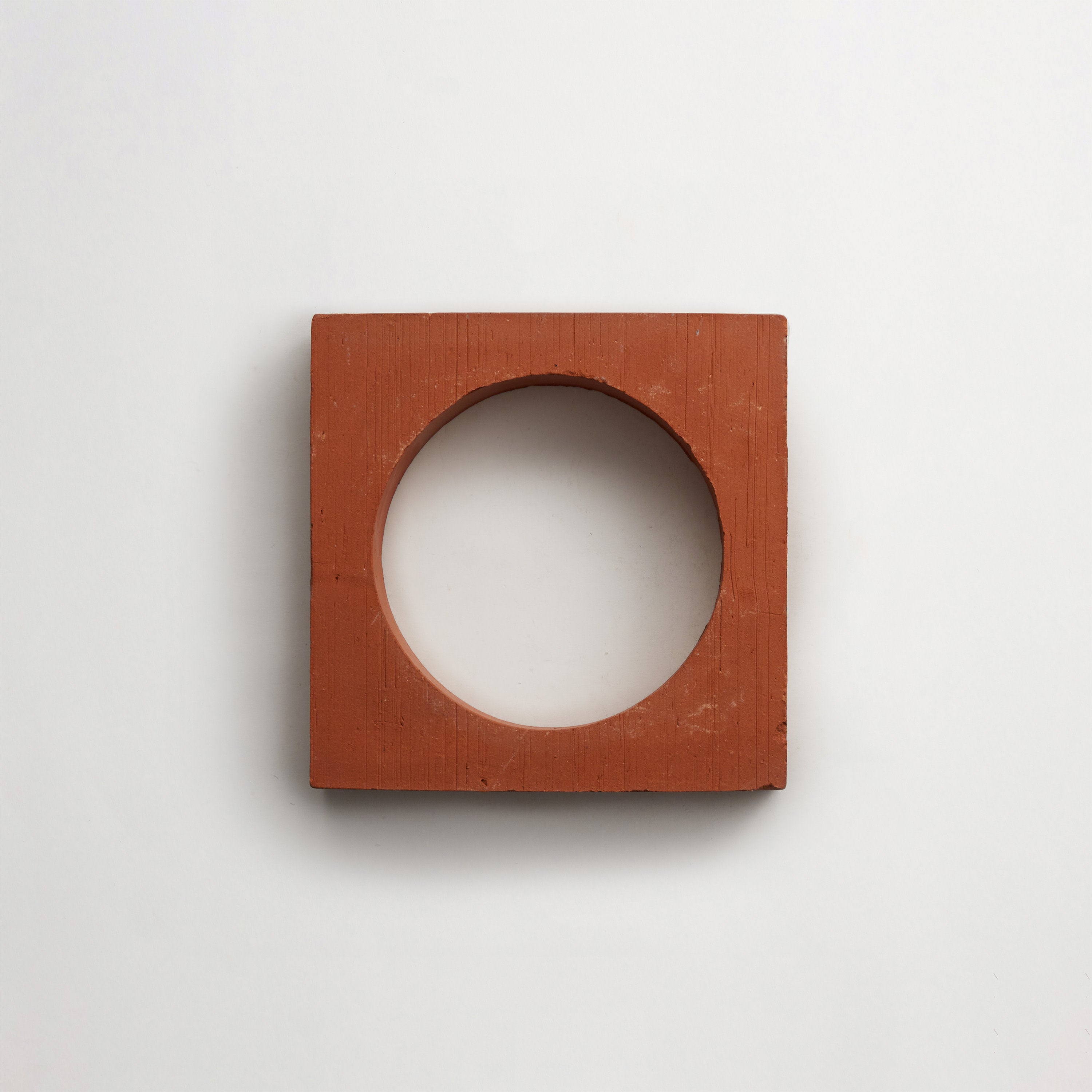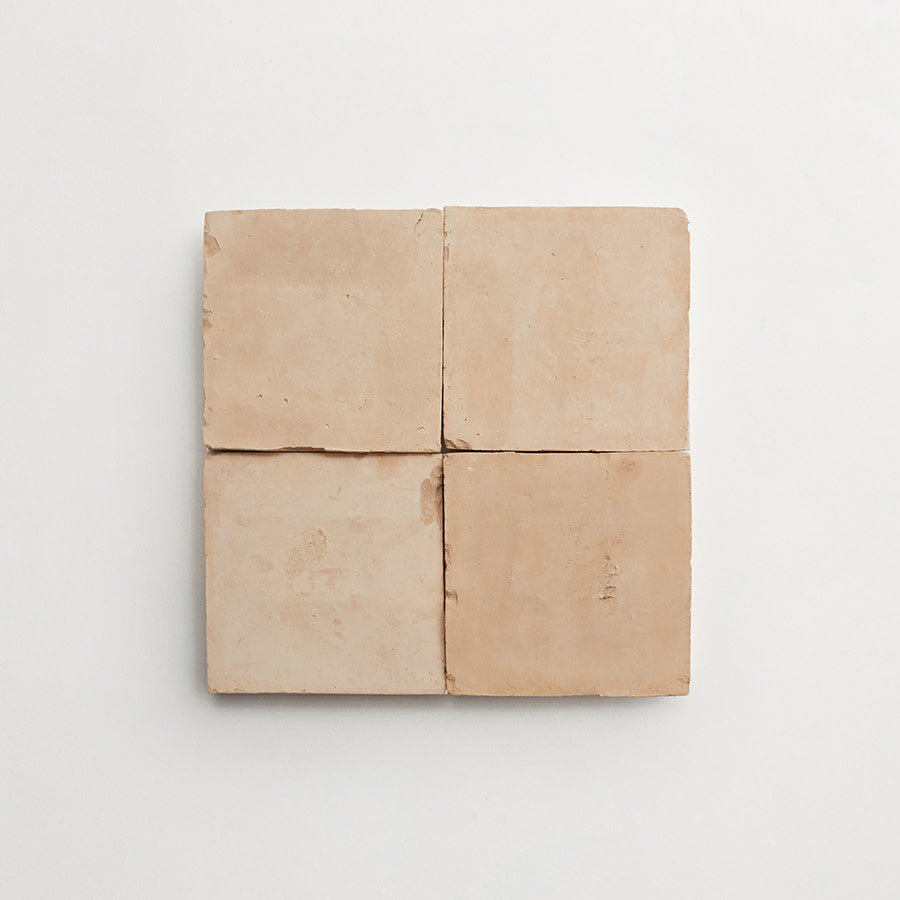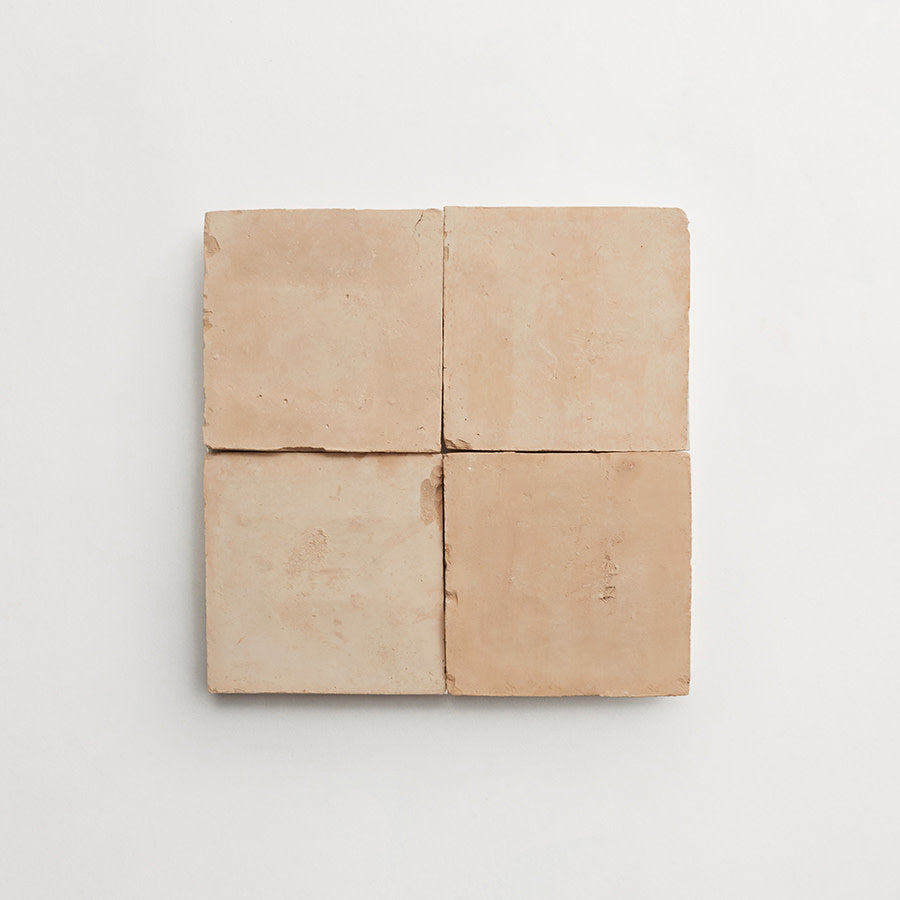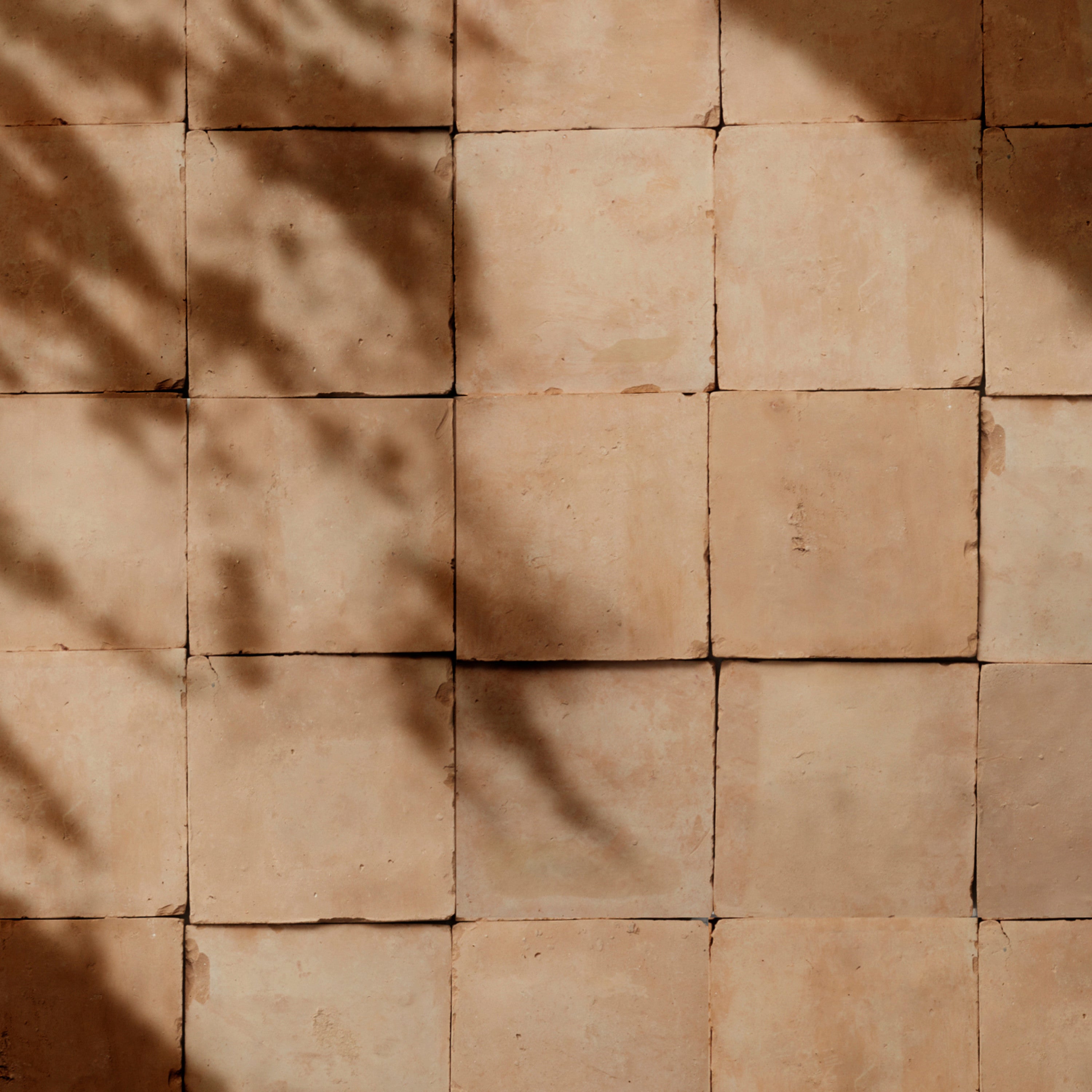your shopping cart is empty.

Brickworks, 4x8" Mason, Denali Stone
From Challenge to Showstopper: 13 Sloped Yard Landscaping Ideas
Designing on a slope presents distinctive opportunities and challenges for landscape architects and interior designers. By carefully integrating elements like landscape grading, erosion control, and drainage solutions, a hillside can become a dynamic focal point — even one that has people wishing for their own sloped yard.
Incorporating hardscape and landscape elements like retaining walls, tiered garden beds, and low-maintenance hardscaping ensures that functions like pathways and walkways flow seamlessly with the topography. In this article, we explore thirteen inventive sloped yard landscaping ideas tailored for professionals seeking to elevate any project.
Turn your design challenge into a statement space with OUTERclé’s artisan tiles. Explore our curated collections.
13 Landscaping Ideas for Sloped Front & Backyards
Thoughtful landscape planning sets the stage for a hillside transformation. Whether designing a sloped backyard for a residential courtyard or crafting a sloped front yard that enhances curb appeal, these landscaping ideas marry aesthetics with structural integrity.
1. Sculpt Terraced Levels Into the Hillside to Create Intentional Spaces
Terracing is a cornerstone method for reclaiming steep slopes. By carving terraces or tiered garden beds into the hillside, designers can segment the gradient into a series of flat planes. These terraces facilitate targeted erosion control, allowing for precise soil retention and water management. Mulch and gravel can be layered between retaining walls to further moderate runoff.
Each flat level becomes an intentional space — ideal for plantings, seating zones, or tiled stairs that connect one terrace to the next. Thoughtful terrace design balances structural support with aesthetic flow, ensuring that the sloped yard design remains both stable and visually compelling.
2. Reimagine Retaining Walls as Design Features
Retaining walls often serve purely structural purposes, but they become signature design features, too. Using materials like natural stone or bespoke artisanal tile, a retaining wall can function as both erosion control and sculptural art. Integrating recesses for plantings — such as ground cover plants and drought-tolerant shrubs — softens the hardscape.
Retaining walls can also delineate levels that accommodate pathway junctions, outdoor seating areas, or even a driveway apron on steeper sites. Seamlessly blending retaining walls with landscape grading emphasizes both stability and spatial hierarchy, making retention structures integral to the overall sloped yard landscaping vision.
3. Create Stepped Pathways That Flow Like Art
Stepped pathways traverse slopes with dynamic elegance. By using gravel, mulch, or tiled stairs — interspersed with low-maintenance hardscaping — professionals can sculpt a choreographed ascent. Introducing subtle curves and offset alignments prevents rigid lines and encourages a natural rhythm, guiding the eye upward and downward.
Drainage solutions like gravel-filled gaps can help mitigate water accumulation. Balancing hardscape design with adjoining plantings, like strategically placed ground cover plants, ensures that each step feels integrated rather than imposed. In this way, a simple sloped backyard retaining wall can transition into a sculpted series of steps that invite exploration.
4. Introduce Elevated Entertaining Zones with a Multi-Level Patio
Transform a steep incline into an entertaining haven by designing a multi-level patio. Using retaining walls to carve out level platforms, each tier can host distinct functions — dining, lounging, and grilling, for example — while preserving clear sightlines. Low-maintenance hardscaping materials like artisanal outdoor tile can embellish patio surfaces, blending durability with refined aesthetics.
Connecting these patios via tiled stairs can soften transitions and ensure proper drainage. Meanwhile, supplementing each level with mulch or decorative gravel around planting beds will both anchor the hardscape and control erosion. Elevated patios are immersive vantage points, allowing users to appreciate the surrounding garden and hillside features.
5. Frame Structural Garden Beds with Artisanal Tile Borders
Structural garden beds on sloped terrain benefit from precise edging to contain soil and mulch. Framing these beds with artisanal tile borders elevates them from simple planting pockets to focal statements. A narrow tile border can define a tiered garden bed edge, supporting heathers and ornamental grasses that thrive on slopes. Between beds, tiled pathways can guide movement while ensuring permeability.
To complete the look, retaining wall segments can be capped with matching tile. By juxtaposing natural stone beds with refined tile accents, this approach merges the natural environment with craftsmanship, integrating both hardscape and landscape.
Ready to reimagine the landscape? Bring structure and beauty to any elevation with artisanal outdoor tile from OUTERclé.
6. Weave in Water Features That Flow with the Landscape
Adding water features to a slope uses gravity to create dynamic flows. Cascading fountains or tiered water walls can be nestled between retaining wall segments, providing both drainage and sensory appeal. Incorporate stone basins at different elevations to collect and recirculate water, ensuring that runoff is managed and reused. Channels can guide overflow toward designated drainage areas, preventing erosion.
Be sure to surround these features with moisture-loving ground cover plants to mask hard edges and integrate living elements. By balancing water flow with properly engineered retention structures, designers can sculpt a hillside that feels both serene and meticulously orchestrated.
7. Integrate Natural Stone for a Low-Maintenance Hillside
Low-maintenance hillside landscaping often relies on durable materials that weather gracefully. Natural stone tiles or slabs can cover steps or retaining walls, providing an organic counterpoint to other hardscape elements. Meanwhile, interspersing mulch and gravel around these stones reduces weeds and minimizes upkeep.
When combined with hardy ground cover plants, the hillside requires less irrigation and weeding. Proper landscape grading around stone clusters ensures optimal water dispersion, safeguarding against pooling. Utilizing natural stone as primary material also promotes a timeless aesthetic while delivering functional resilience, particularly vital when a client wants both form and function.
8. Shape Pockets of Rest & Reflection with Tiled Seating Along the Gradient
Even small slopes can accommodate intimate niches for rest. Designing built-in seating — perhaps crafted from stone and finished with tile — encourages users to pause and appreciate the gradient. Position seats on modest terraces, supported by low retaining walls that double as backrests. Surround seating pockets with mulch and ground cover plants to accentuate texture and provide softening contrast.
Strategically placed outdoor seating areas offer vantage points over gardens, pathways, and water features, fostering moments of contemplation within a sloped yard. By artfully fusing hardscape design and inviting seating, you can elevate both function and experience.
9. Edge Pathways with Small-Format Tiles to Guide the Eye & Enhance Organic Flow
Pathways on a slope need not be purely utilitarian. By edging pathways or walkways with small-format tiles, designers can create visual anchors that draw the eye along a natural trajectory. The core pathway might consist of compacted gravel or stabilized mulch, reducing maintenance while ensuring permeability. Then, tiled edging can contain the gravel, prevent migration, and reinforce the pathway’s geometry.
Between edging and adjacent planting zones, incorporate ground cover plants or low shrubs to blur the boundary. This strategy merges the hardscape and landscape, creating a harmonious sloped yard design that feels both intentional and informal.
10. Illuminate the Landscape with Reflective Tile & Built-In Lighting
Proper lighting transforms a slope into a dramatic nocturnal canvas. Embed low-voltage LED fixtures along tiled stairs or at the base of retaining walls to accentuate textures and contours. Reflective outdoor tile surfaces can amplify ambient light, creating luminescent pathways that guide users after dusk.
Consider installing recessed fixtures within tile risers, allowing light to wash downward across each step. Adjacent gravel and mulch zones will absorb excess light, balancing glare. When integrated with uplights that highlight specimen trees or sculptural boulders, this interplay of reflective tile and engineered lighting elevates both safety and ambience.
11. Create Multi-Sensory Compositions with Mixed Materials
Elevate your sloped project by combining contrasting textures: smooth tile, rough-cut stone, rustic timber, and rich mulch, for example. You might intersect a tiled patio edge with a weathered timber stair tread, then transition to a gravel pathway that traverses a planted pocket. Each material shift invites tactile engagement and visual intrigue.
Don’t forget to integrate aromatic ground cover plants like lavender or rosemary along pathways to introduce scent. Incorporating subtle water sounds from a nearby fountain or rill can also enhance the ambience. By orchestrating a multi-sensory experience, a hillside design transcends the ordinary, offering layers of engagement through sight, sound, touch, and smell.
12. Turn Retaining Structures Into Vertical Focal Points
Instead of hiding retaining walls, celebrate them as vertical canvases. Use patterned tile to create mosaics or geometric accents on the wall face. Embed niches for sculptural elements or integrate linear water spouts that cascade down the tiled surface, adding movement. Above each retaining structure, plant cascading ground cover plants that tumble over the edge, softening transitions.
Beyond these details, mulch and gravel zones at the base can ensure that soil remains in place and water runs to designated drainage channels. By turning retaining structures into intentional focal points, a sloped yard becomes a gallery-like moment within the terrain.
13. Define Transitions with Pattern & Palette
Cohesive color and pattern choices will guide users through each elevation shift. Coordinate tile hues with natural stone tones and gravel accents to ensure that each zone feels part of a unified composition. For example, you might select tan flagstone tile for stair treads, then use a warm travertine tile at the landing. Surround landings with mulch beds and various ground cover plants to create contrast. At the driveway entrance, you might even integrate a band of patterned tile to signify threshold.
Thoughtful pattern and palette shifts reinforce both wayfinding and aesthetic continuity, ensuring that every transition reads as intentional rather than abrupt.
By embracing these sloped yard landscaping ideas, landscape architects and interior designers can turn elevation challenges into signature statements. Whether crafting a terraced hillside with tiered garden beds, weaving in water features, or using reflective tile to enhance nighttime drama, each strategy prioritizes both utility and artistry.
Transform your outdoor project from challenge to showstopper. Start designing a hillside sanctuary with handcrafted outdoor tile from OUTERclé.
-
Sand
-
Pemberley Pavers
:
-
Granita
-
4
" x
-
4
" x
-
⅛
"
-
sqft
/
$
-
Flemish Red
-
Belgian Reproduction Privé
:
-
Torrone I
-
8
" x
-
8
" x
-
⅞
"
-
sqft
/
$
-
Natural (Unglazed)
-
FezBrick
:
-
4
" x
-
16
" x
-
⅝
"
-
sqft
/
$







